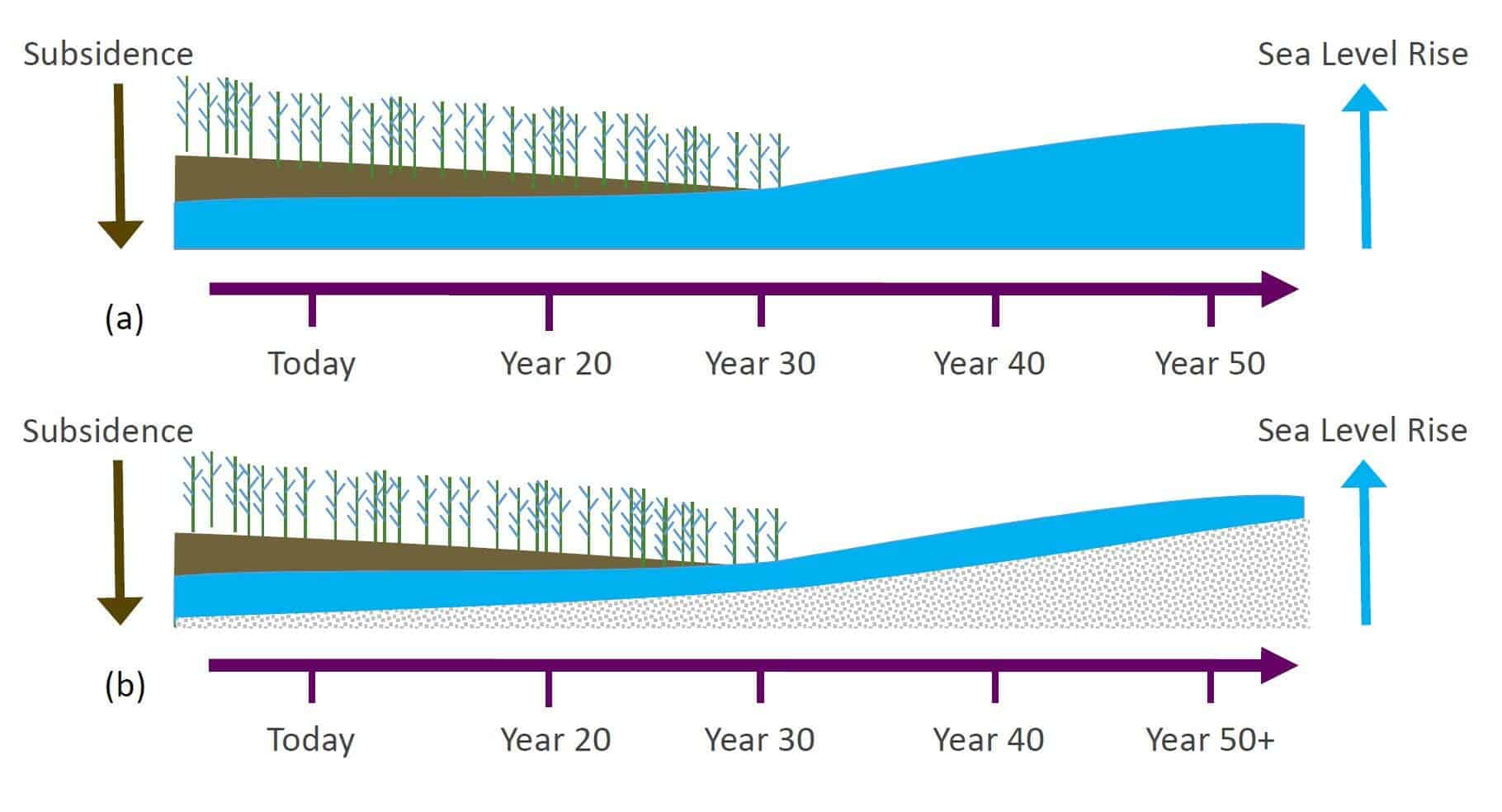

This is part 2 of a two-part series concerning Richard Condrey and Natalie Peyronnin’s recent paper, “ Using Louisiana’s coastal history to innovate its coastal future,” published in Shore & Beach, Fall 2017. See part one here.
It’s hard to imagine the lush and expansive complex of marshes and oyster reefs that early explorers encountered in south Louisiana, as described in Dr. Condrey’s recent blog . It is equally as hard to imagine how Louisiana’s coast will look into the future.
Unfortunately, there will be large areas of marsh that are lost in the next 50 years, even as we start an aggressive restoration program. We can’t save it all. And as the Gulf of Mexico gets closer, we lose the protection from storms that our coast provides. In a recent paper , Dr. Condrey and I propose that we should explore innovative approaches to transforming the current landscape instead of maintaining the landscape that exists today – and that we should look to the past to rethink our future.
We cannot rebuild the Great Barrier Reef of the Americas or other massive offshore oyster reefs off the coast of Louisiana. […]
Full article: Oyster Reefs of the Past Hold Lessons for Future Coastal Restoration
Seabirds Return to Desecheo Island One Year After Restoration
River Revives After Largest Dam Removal in USA History
Meet the visionary who restored 5,500 acres of wrecked Texas land to paradise
What’s at Stake — Why Coastal Louisiana Matters
Rewilding Santa Monica’s Thoroughly Artificial Beach
Clean water is essential for life, yet millions of Americans unknowingly consume contaminants through their…
Human brains contain higher concentrations of microplastics than other organs, according to a new study, and the…
From the Office of the Governor: In anticipation of a multi-day, significant atmospheric river in Northern California,…
From Governor Newsom: Scientists, water managers, state leaders, and experts throughout the state are calling…
Photo: A harmful algal bloom in Milford Lake, Kansas, made the water appear bright green.…
An expanded plastic foam coffee cup is at a donut shop in Monterey Park, California.…